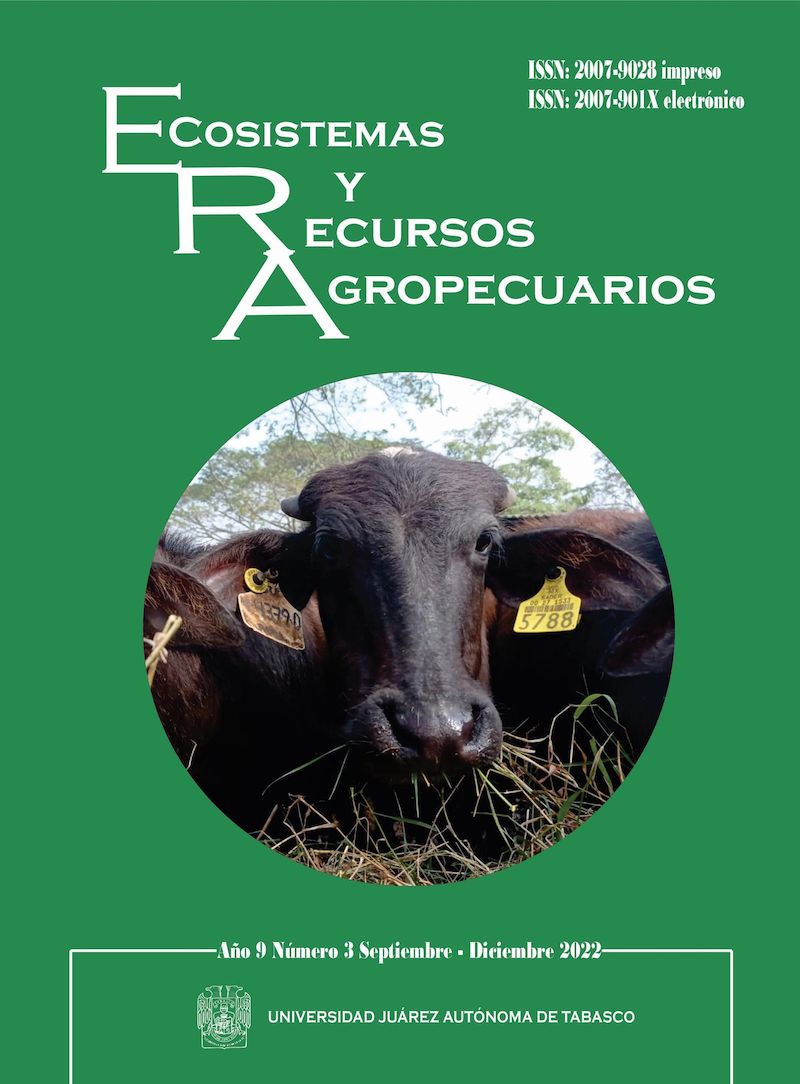Wood density of dominant tree species from the semi-evergreen tropical forest of Calakmul, Mexico
DOI:
https://doi.org/10.19136/era.a9n3.3386Keywords:
forest ecosystems, wood properties, tree biomass, carbon sequestration, southeastern MexicoAbstract
Wood density is a fundamental parameter for the accurate estimation of tree biomass in forest ecosystems. The semi-evergreen forest of the Mexican southeast is characterized by the high diversity of trees, so that it is
necessary to study the variations in wood density. The objective of the study was to determine the variation in wood density of the dominant species of the semi-evergreen forest and to generate regression models with wood diameter. We collected 3,260 wood samples of 23 species of three diameter categories (thick,
medium, and thin). The volume of wood was measured with the fluid displacement technique and the dry mass was determined in an oven at 70 ºC for 72 hours.
Wood density was calculated as the ratio of mass to volume. Wood density varied significantly between species, Gymnanthes lucida Sw., being the largest with 0.85 g/cm3, and Bursera simaruba (L.) Sarg, the smallest with 0.37 g/cm3. Regression analysis showed that 20 out of 23 species presented a positive relationship between wood density and diameter size. It was concluded that wood density varied by
species and diameter size of the tree in these forest ecosystems. The results are useful for modeling the dynamics of tree biomass accumulation of primary
and secondary forests that are constantly changing in their structure and species composition.
Downloads
Downloads
Published
Issue
Section
License
Copyright (c) 2022 Ecosistemas y Recursos Agropecuarios

This work is licensed under a Creative Commons Attribution-NonCommercial-ShareAlike 4.0 International License.
Aviso de copyright
Los autores que se envían a esta revista aceptan los siguientes términos:
una. Los autores conservan los derechos de autor y garantizan a la revista el derecho a ser la primera publicación del trabajo con una licencia de atribución de Creative Commons que permite a otros compartir el trabajo con un reconocimiento de la autoría del trabajo y la publicación inicial en esta revista.
B. Los autores pueden establecer acuerdos complementarios separados para la distribución no exclusiva de la versión del trabajo publicado en la revista (por ejemplo, en un repositorio institucional o publicarlo en un libro), con un reconocimiento de su publicación inicial en esta revista.
C. Se permite y se anima a los autores a difundir su trabajo electrónicamente (por ejemplo, en repositorios institucionales o en su propio sitio web) antes y durante el proceso de envío, ya que puede conducir a intercambios productivos, así como a una cita más temprana y más extensa del trabajo publicado. (Consulte El efecto del acceso abierto).


